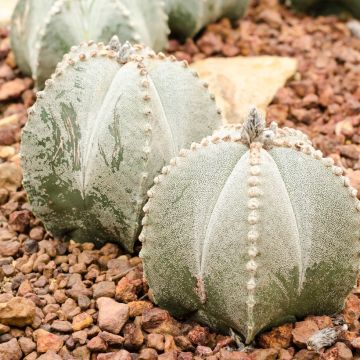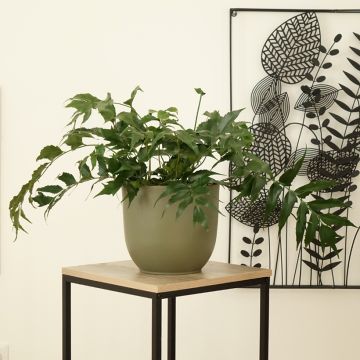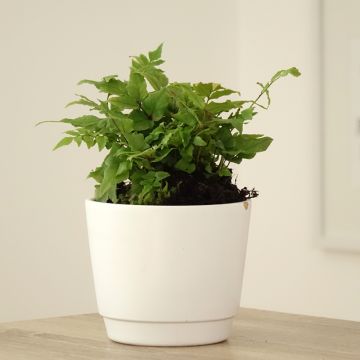

Astrophytum ornatum - Star cactus
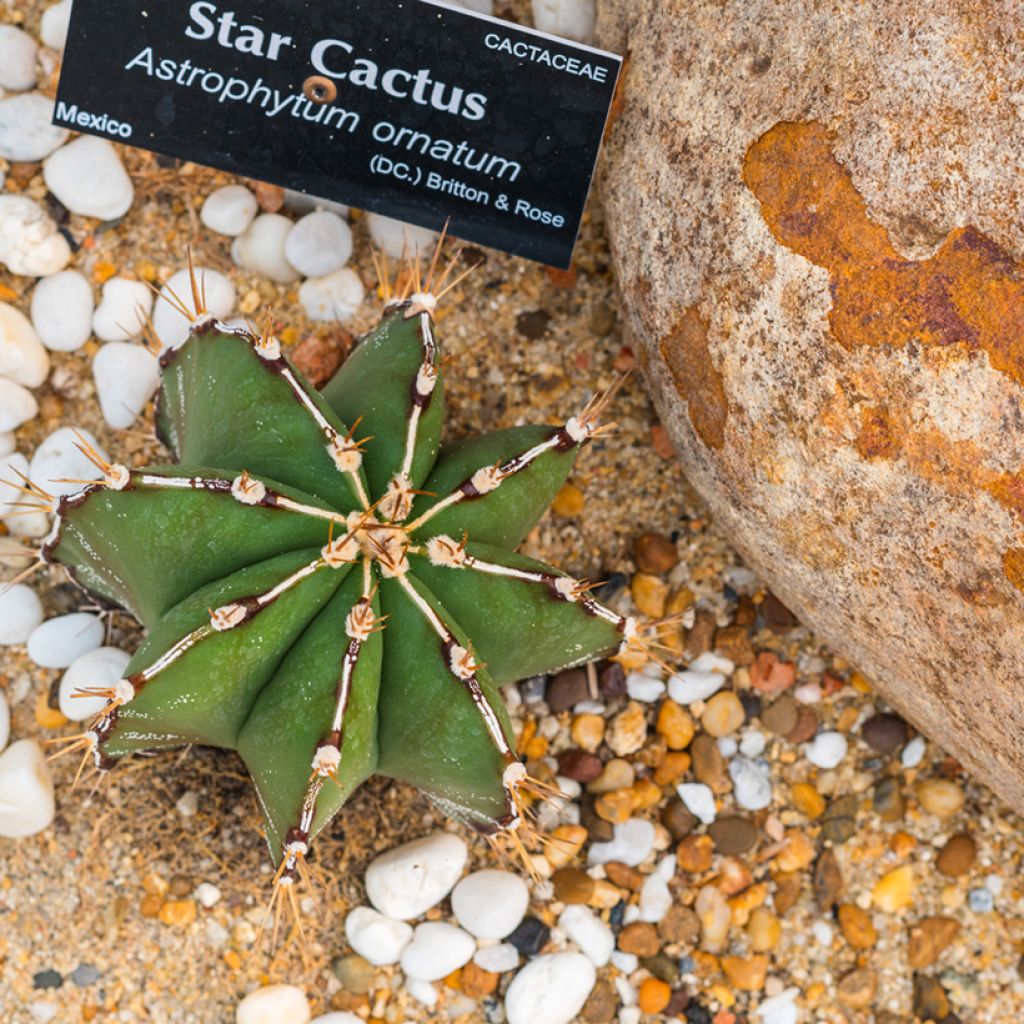

Astrophytum ornatum - Star cactus
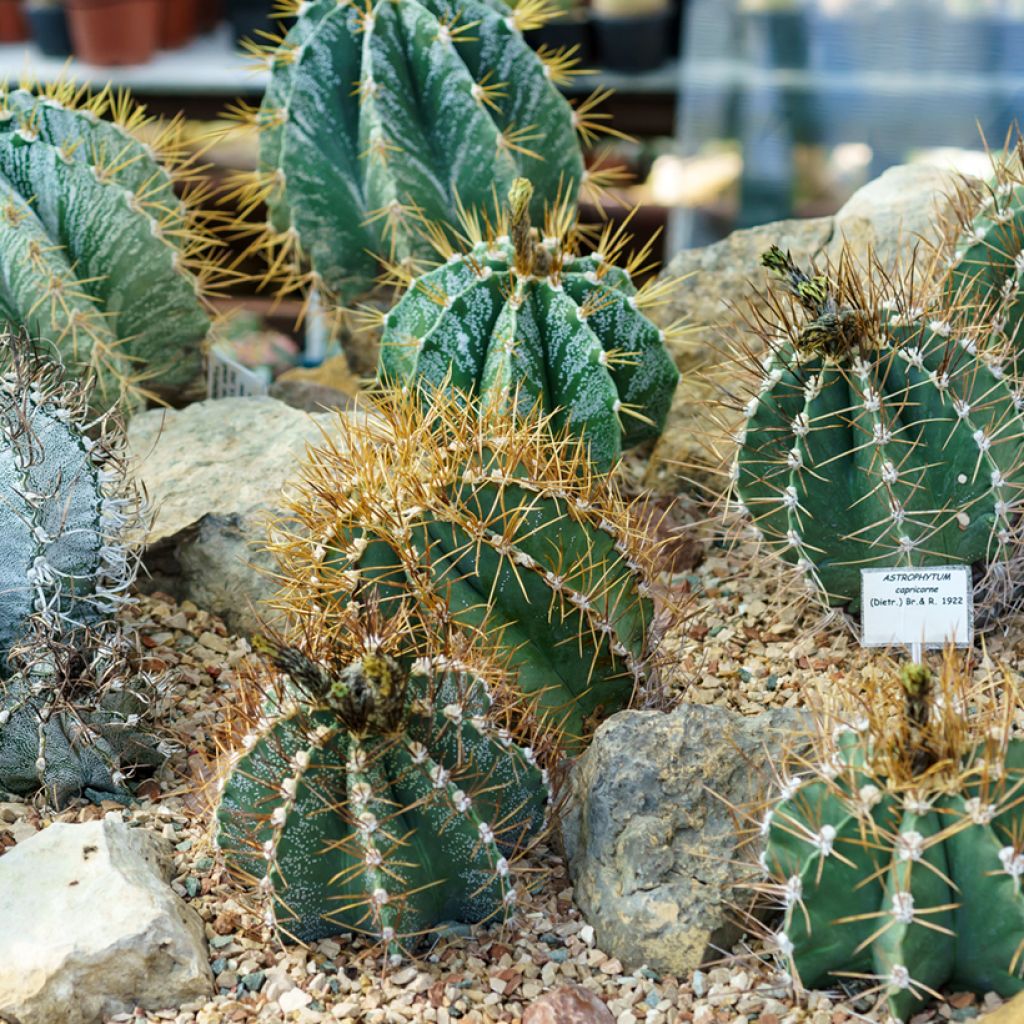

Astrophytum ornatum - Star cactus
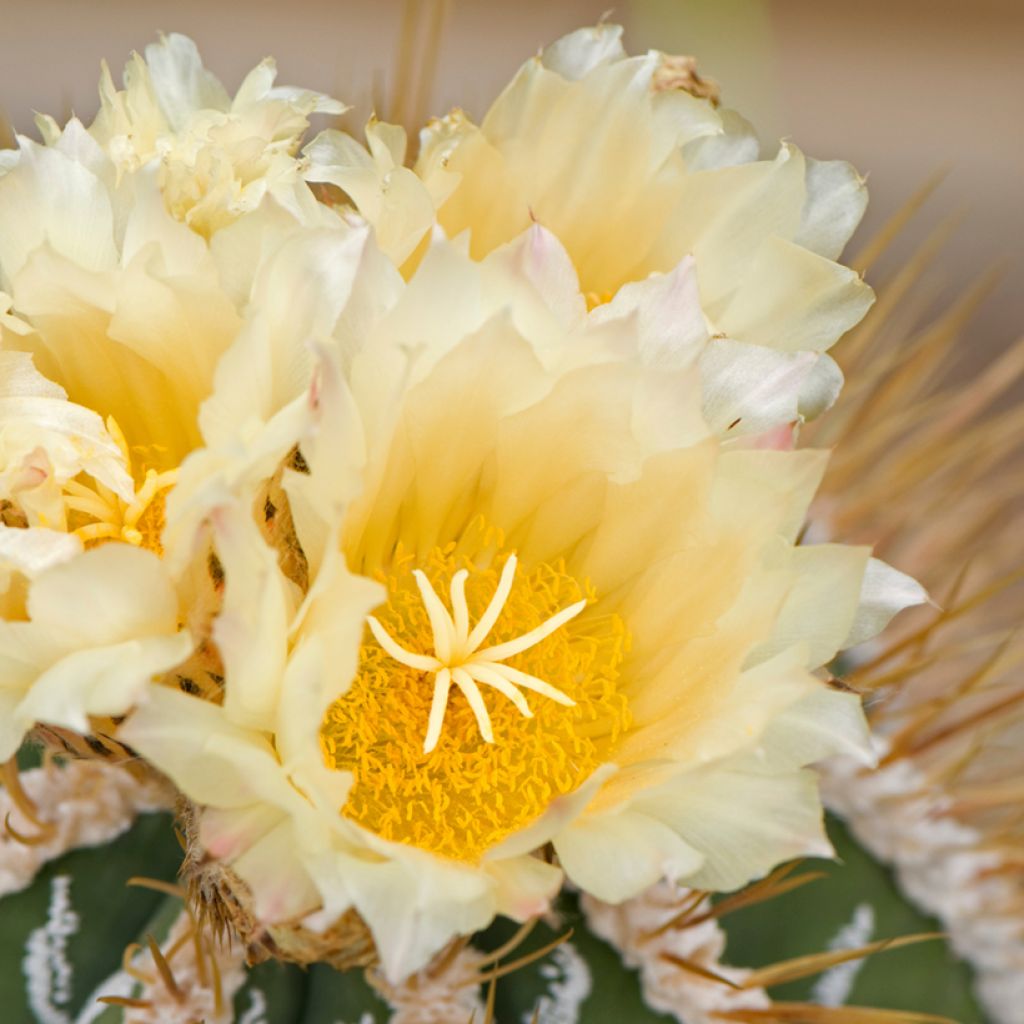

Astrophytum ornatum - Star cactus
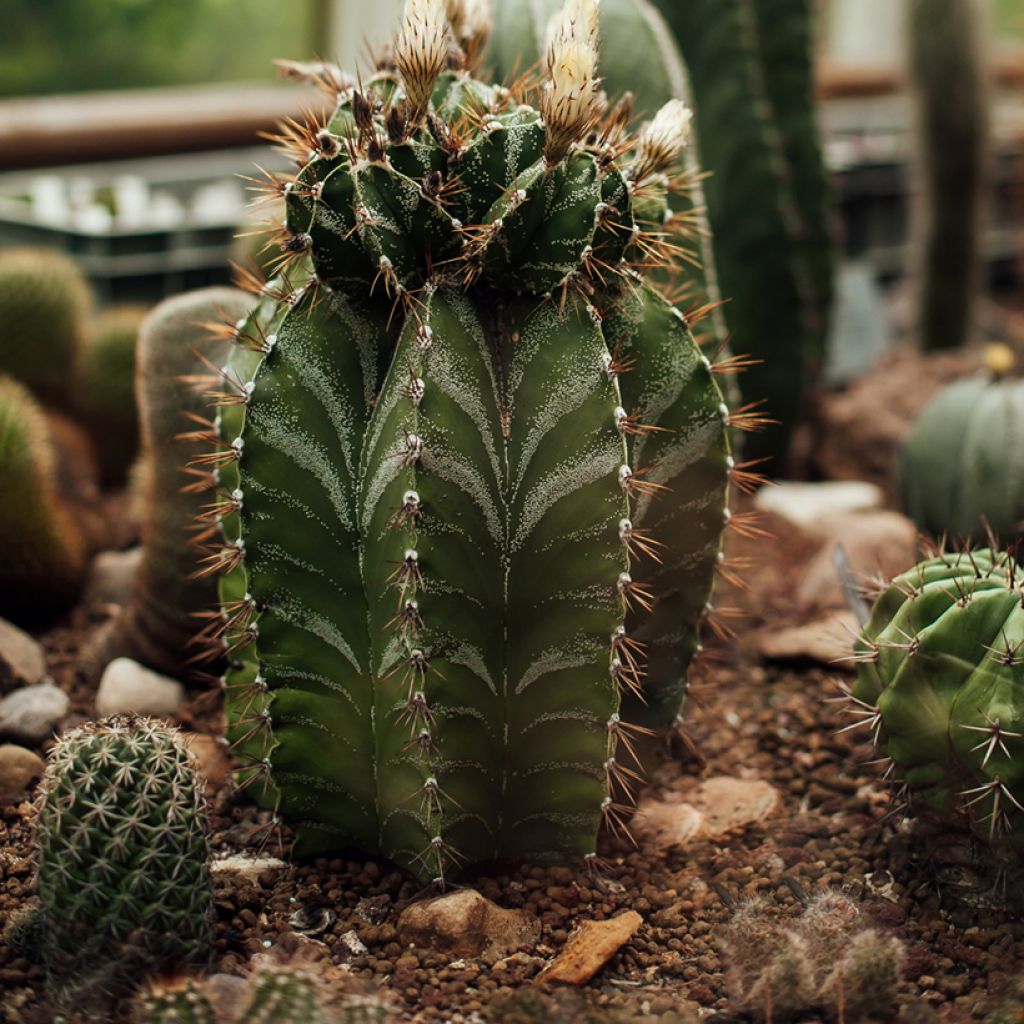

Astrophytum ornatum - Star cactus


Astrophytum ornatum - Star cactus
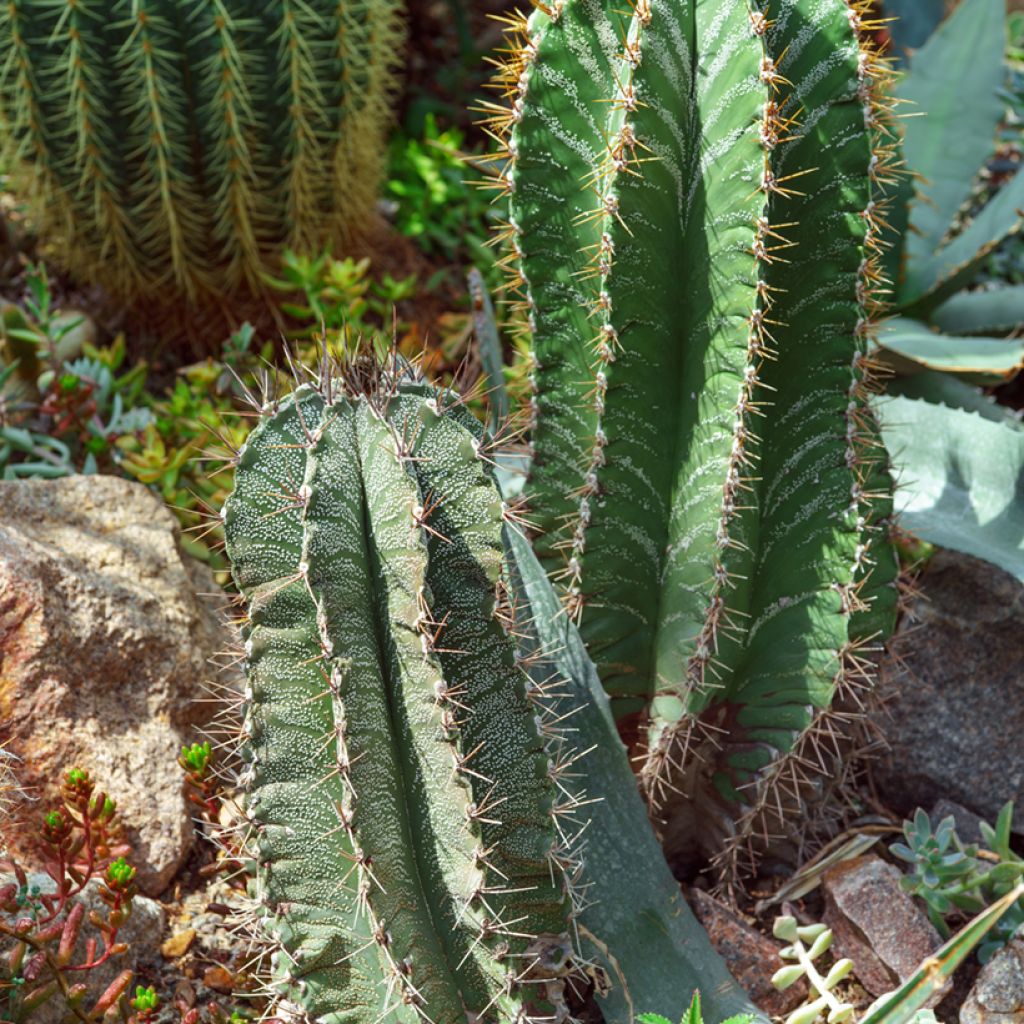

Astrophytum ornatum - Star cactus
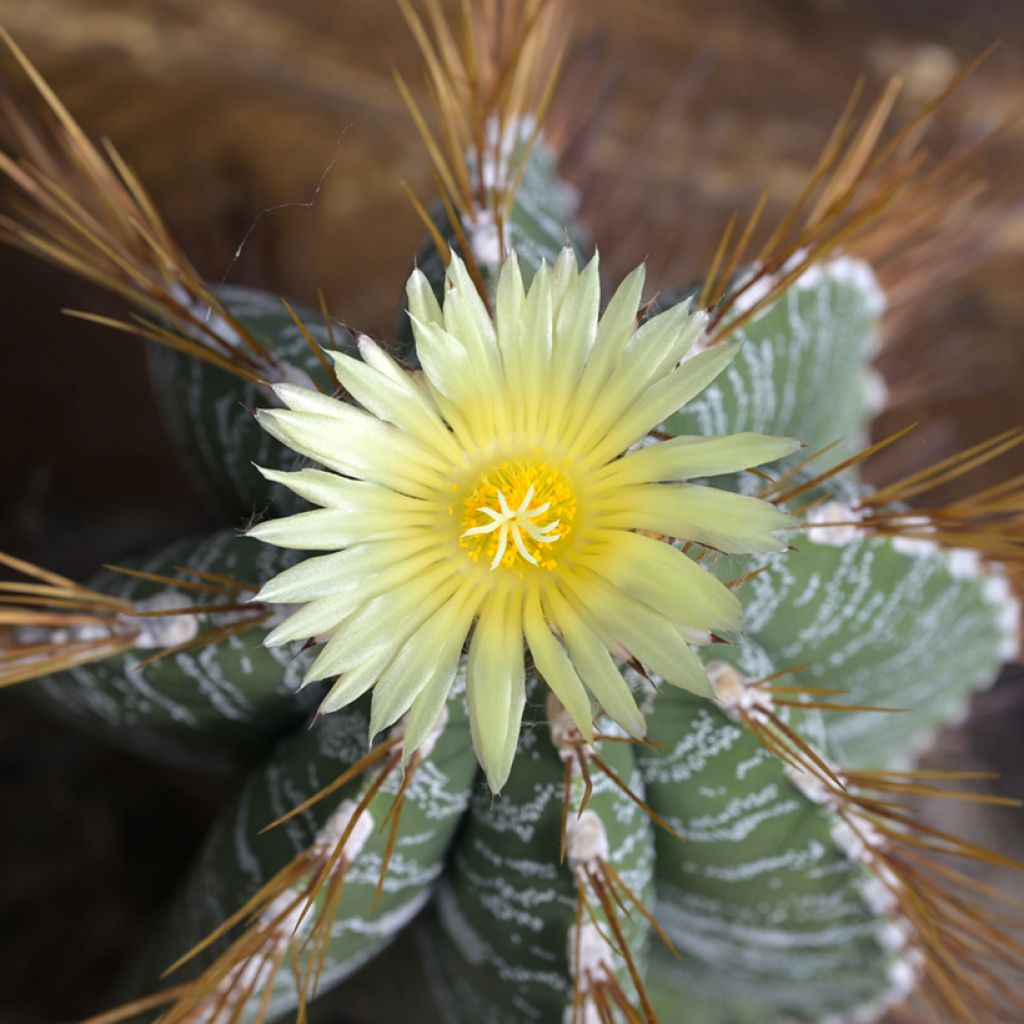

Astrophytum ornatum - Star cactus
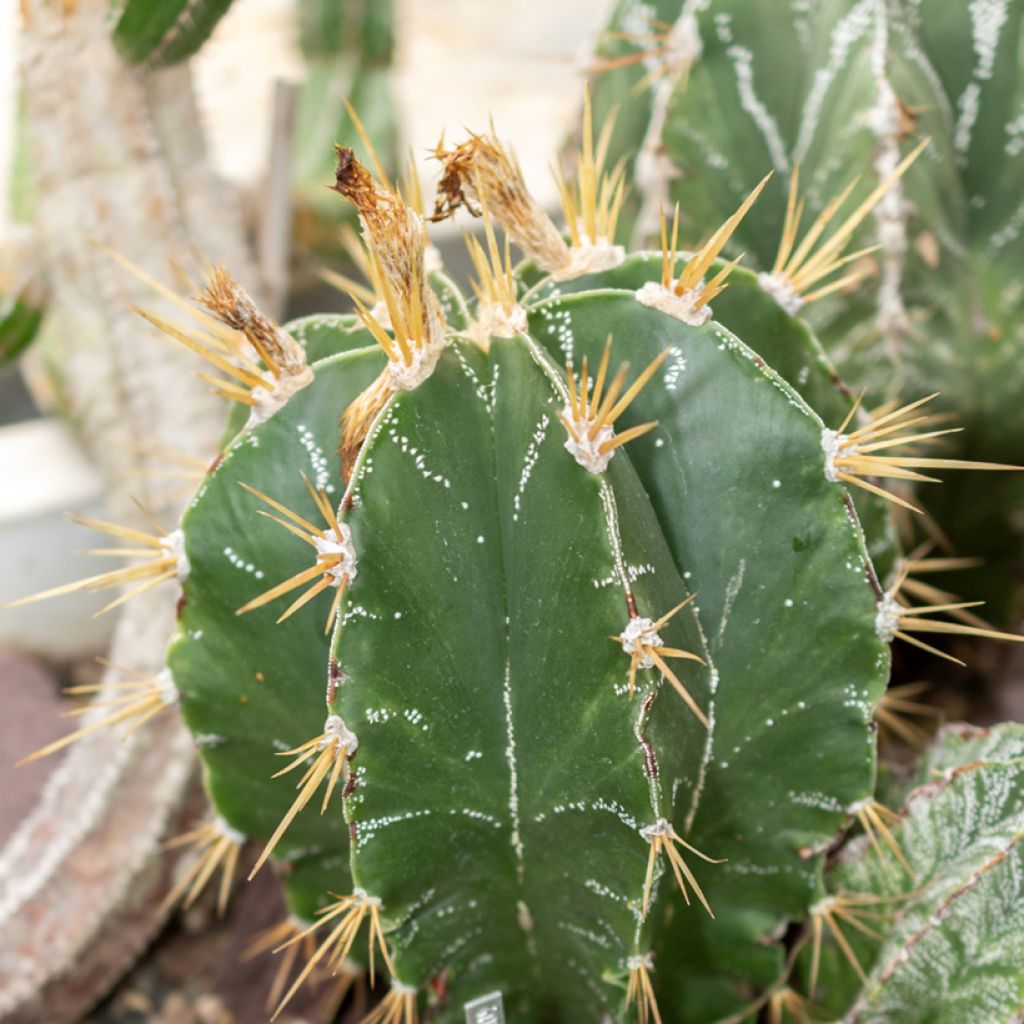

Astrophytum ornatum - Star cactus
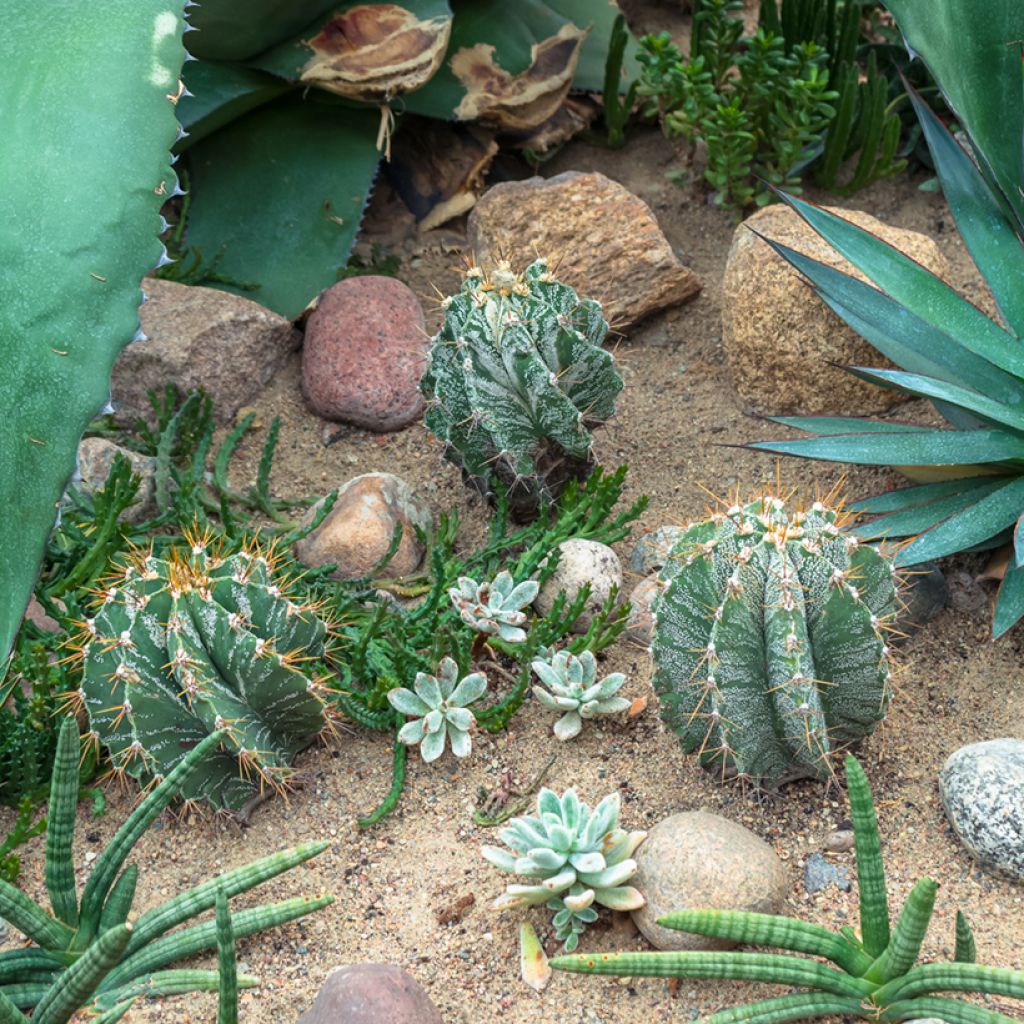

Astrophytum ornatum - Star cactus
Astrophytum ornatum - Cactus estrella
Astrophytum ornatum
Cactus estrella
This item cannot be shipped to the selected country
Delivery charge from 6,90 €
More information
Shipping country:
-
-
-
-
-
-
-
-
-
-
-
-
-
-
-
-
-
-
-
-
-
-
-
-
-
-
-
-
-
-
-
-
Schedule delivery date,
and select date in basket
This plant carries a 30 days recovery warranty
More information
We guarantee the quality of our plants for a full growing cycle, and will replace at our expense any plant that fails to recover under normal climatic and planting conditions.
From 7,90 € for pickup delivery and 6,90 € for home delivery
Express home delivery from 8,90 €.
Description
Astrophytum ornatum, also known as the star cactus, is a columnar cactus prized for its geometric habit and star-shaped patterns. Its body features prominent ribs covered with fine white tufts, giving it a certain elegance. At maturity, it produces large, bright yellow flowers at its apex. It is easy to grow in a pot with a well-draining substrate, in a sunny position, with spaced-out watering. You can place it on the terrace during the warmer months.
Astrophytum ornatum belongs to the Cactaceae family and is also known by the names Echinocactus ornatus, Astrophytum glabrescens, Astrophytum ornatum var. mirbelii. It grows naturally on the rocky and arid slopes of the central plateau of Mexico. It can reach up to 1 m in height in the ground, but its growth is slow. Indoors, it remains more compact, typically measuring 30 to 60 cm in height at maturity. Its body is marked by well-defined ribs, adorned with small white woolly tufts, which form star-shaped patterns. These structures help the plant to reflect light and limit evaporation, an adaptation mechanism to desert conditions. Its robust, yellowish to brownish thorns become less prominent with age. In summer, when it reaches maturity, after 7 to 10 years and under optimal conditions, it can produce large pale yellow flowers, measuring up to 7 cm in diameter. These flowers are very beautiful but short-lived and open during the day. They can appear successively for several weeks.
Indoors, the star cactus requires a very bright position, with several hours of direct sunlight per day. It tolerates high temperatures but must be protected from the cold: it suffers when temperatures drop below 5 °C. Its growing substrate must be very well-draining, composed of a mix of cactus compost, coarse sand, and perlite, to avoid excess moisture. Watering should be moderate, allowing the soil to dry out completely between waterings. In winter, the plant enters a dormant period, and watering should be almost stopped. Overwatering can lead to root rot, the main cause of failure in cultivation. This cactus is resistant to diseases but may be attacked by mealybugs.
Astrophytum ornatum has rigid thorns that can be dangerous if handled carelessly. It is advisable to place it out of reach of children and pets to avoid any risk of injury.
With its slow growth, Astrophytum ornatum is perfectly suited to pot cultivation, in a bright living room, conservatory, or greenhouse. A terracotta pot will optimise drainage while being less suffocating for the roots. It pairs well with other columnar cacti, such as Echinopsis terscheckii, as well as with compact succulents like Lithops or Echeveria agavoides. Its majestic appearance also allows it to be grown alone, as a centrepiece in a cactus collection.
Report an error about the product description
Astrophytum ornatum - Cactus estrella in pictures
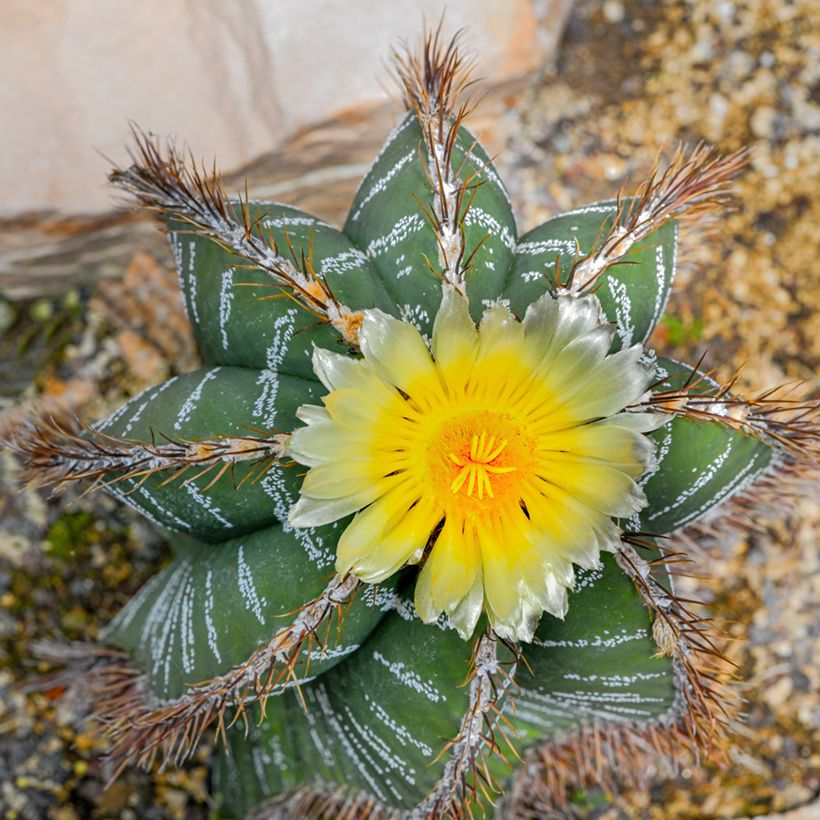

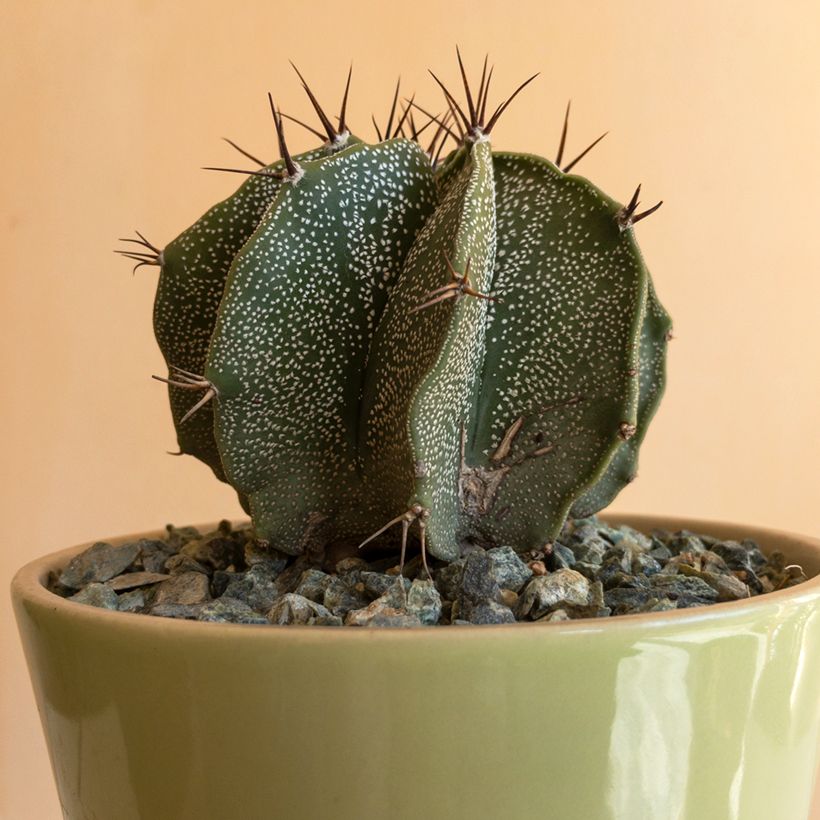



Foliage
Plant habit
Flowering
Botanical data
Astrophytum
ornatum
Cactaceae
Cactus estrella
North America
Safety measures
Other Cactées et succulentes d'intérieur
View all →Location
Location
Maintenance and care
Potting advice, substrates and fertilisers
Disease and pest advice
Maintenance and care
This item has not been reviewed yet - be the first to leave a review about it.
Plantes d'intérieur par famille
Haven't found what you were looking for?
Hardiness is the lowest winter temperature a plant can endure without suffering serious damage or even dying. However, hardiness is affected by location (a sheltered area, such as a patio), protection (winter cover) and soil type (hardiness is improved by well-drained soil).

Photo Sharing Terms & Conditions
In order to encourage gardeners to interact and share their experiences, Promesse de fleurs offers various media enabling content to be uploaded onto its Site - in particular via the ‘Photo sharing’ module.
The User agrees to refrain from:
- Posting any content that is illegal, prejudicial, insulting, racist, inciteful to hatred, revisionist, contrary to public decency, that infringes on privacy or on the privacy rights of third parties, in particular the publicity rights of persons and goods, intellectual property rights, or the right to privacy.
- Submitting content on behalf of a third party;
- Impersonate the identity of a third party and/or publish any personal information about a third party;
In general, the User undertakes to refrain from any unethical behaviour.
All Content (in particular text, comments, files, images, photos, videos, creative works, etc.), which may be subject to property or intellectual property rights, image or other private rights, shall remain the property of the User, subject to the limited rights granted by the terms of the licence granted by Promesse de fleurs as stated below. Users are at liberty to publish or not to publish such Content on the Site, notably via the ‘Photo Sharing’ facility, and accept that this Content shall be made public and freely accessible, notably on the Internet.
Users further acknowledge, undertake to have ,and guarantee that they hold all necessary rights and permissions to publish such material on the Site, in particular with regard to the legislation in force pertaining to any privacy, property, intellectual property, image, or contractual rights, or rights of any other nature. By publishing such Content on the Site, Users acknowledge accepting full liability as publishers of the Content within the meaning of the law, and grant Promesse de fleurs, free of charge, an inclusive, worldwide licence for the said Content for the entire duration of its publication, including all reproduction, representation, up/downloading, displaying, performing, transmission, and storage rights.
Users also grant permission for their name to be linked to the Content and accept that this link may not always be made available.
By engaging in posting material, Users consent to their Content becoming automatically accessible on the Internet, in particular on other sites and/or blogs and/or web pages of the Promesse de fleurs site, including in particular social pages and the Promesse de fleurs catalogue.
Users may secure the removal of entrusted content free of charge by issuing a simple request via our contact form.
The flowering period indicated on our website applies to countries and regions located in USDA zone 8 (France, the United Kingdom, Ireland, the Netherlands, etc.)
It will vary according to where you live:
- In zones 9 to 10 (Italy, Spain, Greece, etc.), flowering will occur about 2 to 4 weeks earlier.
- In zones 6 to 7 (Germany, Poland, Slovenia, and lower mountainous regions), flowering will be delayed by 2 to 3 weeks.
- In zone 5 (Central Europe, Scandinavia), blooming will be delayed by 3 to 5 weeks.
In temperate climates, pruning of spring-flowering shrubs (forsythia, spireas, etc.) should be done just after flowering.
Pruning of summer-flowering shrubs (Indian Lilac, Perovskia, etc.) can be done in winter or spring.
In cold regions as well as with frost-sensitive plants, avoid pruning too early when severe frosts may still occur.
The planting period indicated on our website applies to countries and regions located in USDA zone 8 (France, United Kingdom, Ireland, Netherlands).
It will vary according to where you live:
- In Mediterranean zones (Marseille, Madrid, Milan, etc.), autumn and winter are the best planting periods.
- In continental zones (Strasbourg, Munich, Vienna, etc.), delay planting by 2 to 3 weeks in spring and bring it forward by 2 to 4 weeks in autumn.
- In mountainous regions (the Alps, Pyrenees, Carpathians, etc.), it is best to plant in late spring (May-June) or late summer (August-September).
The harvesting period indicated on our website applies to countries and regions in USDA zone 8 (France, England, Ireland, the Netherlands).
In colder areas (Scandinavia, Poland, Austria...) fruit and vegetable harvests are likely to be delayed by 3-4 weeks.
In warmer areas (Italy, Spain, Greece, etc.), harvesting will probably take place earlier, depending on weather conditions.
The sowing periods indicated on our website apply to countries and regions within USDA Zone 8 (France, UK, Ireland, Netherlands).
In colder areas (Scandinavia, Poland, Austria...), delay any outdoor sowing by 3-4 weeks, or sow under glass.
In warmer climes (Italy, Spain, Greece, etc.), bring outdoor sowing forward by a few weeks.


































